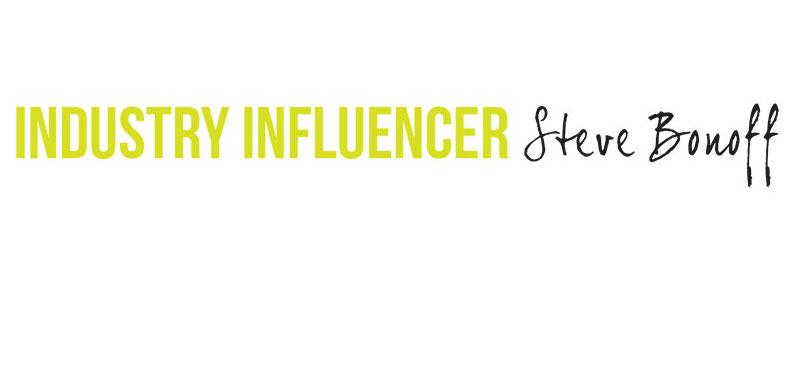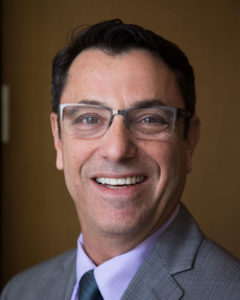

Steve Bonoff has spent almost 20 years in graphic communications’ association leadership. In 2018, his career led him to Minneapolis, Minnesota, where he now works as the president of the Printing Industry Midwest (PIM) association, a five-state membership association supporting print, mail and marketing service providers.
“We provide members with access to trusted information, cost-saving resources and cutting-edge education designed specifically for print and integrated marketing professionals in the upper Midwest,” he says.
Prior to joining PIM, he served as the executive vice president at Idealliance and before that worked his way up to president at the International Prepress Association (IPA).
“As president [at IPA], we initiated groundbreaking online
programs to help our members effectively react to the dramatic changes impacting the prepress industry,” Bonoff says. “Recognizing the need to facilitate its members’ adoption of end-to-end media production workflows and technologies, I led the charge to merge IPA with the international standards body, Idealliance, in 2010.”
He’s a visionary with a plan to promote jobs through his PIM Workforce Coalition. We visited with Bonoff to learn more about PIM and what his goals are for the industry.
Share with us the mission at PIM.
Our mission is to ensure the vitality, innovation and business success of our member companies and the industry we serve. Members participate to: enhance skills and stay ahead of the curve, reduce injuries and keep OSHA regulators at bay, attract and retain well-qualified personnel, discover industry best practices and learn from peers, reduce expenses through collective purchasing, gain recognition for quality work and employees, ensure production stays online and in top-form, and support efforts to reduce regulations and spur growth
Tell us about the Workforce Coalition and why it is important at this time for the industry.
The industry needs action NOW to ensure we have a next-generation workforce. We’re in a battle with other industries to attract and recruit our workforce, especially in the areas of press and bindery production. We’ve done a poor job of public relations about the advanced technology aspect of our industry. This includes the promotion of careers that could attract more young people to the industry if they were aware of the high-tech skills now needed in most print media companies. Our ability to attract young professionals will determine our future.
How would you describe the lack of skilled/technical workers in the field?
The pipeline of professionals that previously came from two- and four-year graphic communication schools has slowed to a crawl with the loss of many of these programs. If schools aren’t informing career-seekers of the opportunities in print, how do we as an industry think the next-generation workforce will be secured? It is on us to take the helm of this process of informing students and career-seekers that print as an industry is more than they know.
The printing industry is an $898-billion-a-year global industry that drives about $3.8 trillion in related industries and is one of the world’s top advanced manufacturing sectors. There are some 42,000-plus printing companies and print-related establishments in the United States; that’s more establishments than Subway and McDonald’s (US) restaurants combined. These companies employ 847,000-plus employees in the US. While some printed products like newspapers are in decline, packaging and other print services are growing and print service companies are growing with them. We have a responsibility as an industry to do a better job telling the story of print.
What specific programs have you started to advance the mission of the PIM? Which ones do you see the most promise in?
The skyrocketing cost of health insurance is a huge burden facing small businesses today, and Printing Industry Midwest is addressing this challenge. Through a partnership with insurance company Holmes Murphy, all PIM members now have access to an online insurance platform that solves small business health insurance challenges and more. Through a partnership with UnitedHealthcare, we’re offering access to a unique plan specifically designed for small and medium-sized print service providers with Minnesota-based locations. The UHC program is a print-community rated program designed to reduce the costs of insurance for members of PIM.
In your opinion, what will help attract more skilled workers to the industry?
PIM is leading an industry-wide effort to tell the story of print to prospective students and career-seekers – that our industry is more than they know. From the floors we walk on and the clothes we wear to the signs that guide us, the mail we receive, the magazines we read and the food we eat, print plays a vital role – and is virtually everywhere we live and work. This new campaign is designed to help anyone tell this story effectively in their world.
The PRINT IS EVERYWHERE campaign includes digital and printed brochures and presentation materials designed to share the positive stories and impact of the print industry. The campaign graphically conveys how print impacts everyday life in ways not always recognized as being borne by one industry.
Do you see a connection between lack of workforce and engagement with print?
Any decreased appreciation of print is directly tied to our industry’s inability to tell our story well. When the sales conversion for an embellished digitally printed mail piece is compared to a digital banner ad, the results are laughable…print blows it out of the water. Our PRINT IS EVERYWHERE campaign is designed by Gen Z for Gen Z, because we need to do a better job reaching a younger audience with the powerful story of print.
What are your predictions for the industry in the next five years?
Growth will continue to be found in two distinct ways: As technology advances, capacity grows. To feed that capacity, printers will continue to merge their businesses to find efficiencies and feed their presses. Those with a close eye on their clients will follow the data and take their companies in new and exciting places where they not only serve their clients with quality work, they also prove the value and effectiveness of that work through exceptional data analysis skills.
Finally, what are some printed pieces (magazines, journals, calendars, books, etc.), that you couldn’t live without?
I couldn’t live (well) without the printed work of our members. So my eye is on their print!
Bonoff is an active part of the new Graphic Communications Workforce Coalition. The coalition consists of associations (including the FSEA), educators and industry representatives who have joined together to coordinate the efforts of organizations to create awareness, recruit new people into the industry, provide a framework for apprenticeship and training programs, and retain the existing workforce. The Coalition currently is drafting bylaws, soliciting members from various sectors within the graphic communications industry and surveying those on the front lines to gather information on how best to accomplish the group’s goals.

